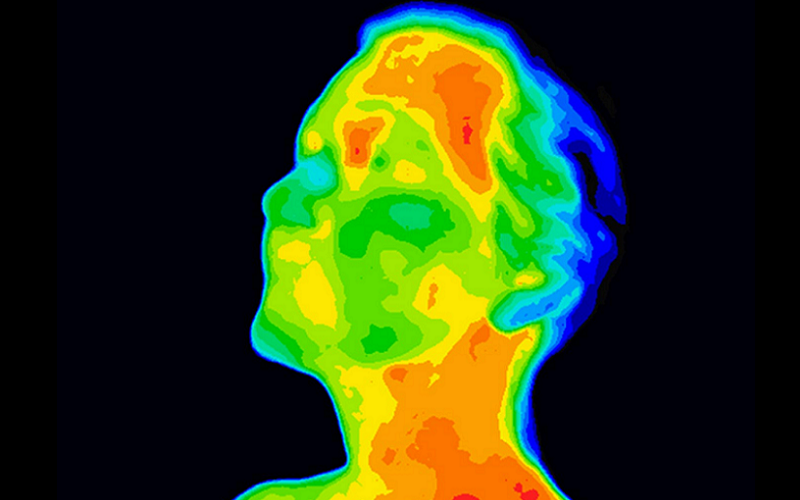
Have you ever noticed feeling mentally sluggish on an exceptionally hot day or struggling to make decisions when you’re freezing cold? Our bodies are designed with intricate systems to regulate temperature, ensuring we maintain a delicate balance conducive for optimal physical health. But the body’s temperature doesn’t just impact our physical well-being; it plays a crucial role in determining how our brain functions, particularly in decision-making processes.
Contents
Basics of Body Temperature Regulation
Our bodies are masterpieces of adaptation and survival, and one of the primary ways they ensure our well-being is through the regulation of body temperature. Known as thermoregulation, this system safeguards our internal environment, enabling our organs to function correctly. As we go deeper into the mechanics and intricacies of body temperature regulation, it becomes evident how significant a role it plays not just in our physical health, but in our cognitive processes as well.
What is Thermoregulation?
Thermoregulation can be likened to a thermostat set inside our bodies. This natural control system works tirelessly to keep our internal temperature within a narrow, safe range, irrespective of external conditions.
Definition and Process
Thermoregulation is the ability of an organism to maintain its core internal temperature within certain limits, ensuring optimal physiological function. For humans, this ideal range is around 97°F (36.1°C) to 99°F (37.2°C), although it can vary slightly among individuals. The body achieves this balance through a series of feedback mechanisms, adjusting heat production and dissipation in response to internal and external stimuli.
Role of Hypothalamus
The hypothalamus, a small region in the brain, plays a pivotal role in thermoregulation. Acting as the body’s internal thermostat, it receives signals from temperature receptors in the skin and organs. When these receptors detect a temperature outside the optimal range, the hypothalamus initiates responses to bring the body’s temperature back to its set point. Whether this means stimulating sweat glands to cool down or causing muscles to shiver for warmth, the hypothalamus ensures that our core temperature remains stable [1].
Factors Influencing Body Temperature
While our body strives to maintain a consistent internal temperature, various external and internal elements can influence it, nudging it up or down.
External Factors (Weather, Clothing)
The environment plays a significant role in determining our body temperature. Extreme conditions, whether it’s the sweltering heat of the desert sun or the freezing chill of a winter’s night, can strain our thermoregulatory systems. Additionally, the clothes we wear can either trap heat or allow our bodies to cool, making clothing choice critical in extreme temperatures.
Internal Factors (Metabolism, Disease, Hormones)
Our internal metabolic processes generate heat, which can influence our core temperature. For instance, after eating a meal, you might notice a slight increase in body temperature due to the metabolic processes involved in digestion. Illnesses, especially fevers, can raise our temperature as the body fights off infections. Hormonal changes, like those experienced during the menstrual cycle or pregnancy, can also affect body temperature.
Adaptive Responses to Temperature Changes
Our bodies are equipped with various mechanisms to combat temperature fluctuations, ensuring that our core temperature remains within the optimal range.
Sweating and Vasodilation
When the body needs to release excess heat, it primarily does so through sweating. As sweat evaporates from the skin, it takes away heat, cooling the body. Alongside this, vasodilation occurs. This process involves the widening of blood vessels, especially near the skin’s surface, allowing for increased blood flow and heat dissipation.
Shivering and Vasoconstriction
Conversely, in cold environments, the body employs methods to retain heat. Shivering is an automatic response where muscles produce heat by rapid contraction and relaxation. At the same time, vasoconstriction, the narrowing of blood vessels, reduces blood flow to the skin, conserving warmth in the body’s core [2].

How Temperature Affects the Brain
The brain, as our central command system, is incredibly sensitive to changes in our body’s internal environment. It’s no surprise then that temperature fluctuations can significantly impact brain function.
Blood Flow and Nutrient Supply
The brain relies heavily on a steady supply of oxygen and nutrients, facilitated by consistent blood flow. Any disruption to this can impact brain health and function.
Importance of Consistent Blood Flow
Our brain, despite accounting for only about 2% of our body weight, consumes roughly 20% of our body’s energy. This energy is primarily derived from the oxygen and glucose carried to the brain by the blood. A steady, consistent flow ensures that the brain has the resources it needs to function optimally. Fluctuations in body temperature can impact this blood flow, leading to potential disruptions in cognitive processes.
Impact of Extreme Temperatures
Exposure to extreme temperatures can cause significant changes in cerebral blood flow. In extremely cold conditions, the body prioritizes keeping the core warm, which can lead to reduced blood flow to the brain. Conversely, in hot environments, increased blood flow to the skin to aid cooling can divert blood away from the brain. Both scenarios can lead to cognitive impairments, such as reduced reaction times, impaired judgment, and memory problems.
Brain Cell Function
The neurons, or nerve cells in our brain, are crucial for transmitting information and facilitating brain functions. Their activity is profoundly affected by temperature.
Temperature Sensitivity of Neurons
Neurons are highly temperature-sensitive. Small deviations from the norm can alter their electrical properties. While a slight increase can enhance neuronal excitability, making them more active, an excessive rise can lead to overexcitation, potentially causing damage. On the flip side, colder temperatures can reduce neuronal activity, leading to sluggish brain function [3].
Potential for Damage in Extremes
Persistent exposure to extreme temperatures can be harmful to brain cells. Prolonged high temperatures can result in heat stress, potentially causing neuronal damage or death. Conversely, prolonged exposure to extreme cold can lead to frostbite in the brain, damaging its tissues.
Cognitive Implications
With an understanding of how temperature affects blood flow and neuronal activity, it’s essential to delve into the direct implications on our cognitive functions.
Impact on Memory
Memory processes can be notably affected by temperature changes. For instance, heat stress can impair both short-term and long-term memory retrieval. Cold environments, while potentially sharpening immediate focus, can hinder complex memory processes and recall.
Effects on Concentration and Focus
Both extreme heat and cold can be distracting, making sustained concentration difficult. While cold might prompt a more immediate and sharp response to immediate stimuli, it can reduce the ability to focus on complex tasks. Heat, on the other hand, can lead to mental fatigue and a decline in attention span.

Body Temperature and Decision Making
As we’ve traversed the journey from the mechanics of body temperature regulation to its effect on brain function, a pivotal aspect emerges: how temperature impacts our decision-making processes. Decision making is a complex cognitive function, integrating information from various sources and then choosing a course of action. Given the temperature’s profound effect on the brain, it’s crucial to understand how it might influence our choices and judgments.
Role of Prefrontal Cortex
Central to our exploration is the prefrontal cortex (PFC), a region of the brain pivotal for cognitive functions like decision making, judgment, and impulse control.
Overview of its Functions
The prefrontal cortex, located in the front part of the brain, is responsible for higher-order functions like planning, problem-solving, and regulating emotions. It’s the part of our brain that weighs consequences, makes judgments, and determines the appropriateness of actions. Essentially, it’s where rational decisions are forged [4].
How Temperature Affects Its Performance
The PFC is particularly sensitive to changes in temperature. Warm conditions can cause a decline in its performance, potentially leading to impulsive decisions without a thorough consideration of consequences. Cold temperatures, on the other hand, might make the PFC act more cautiously, but it can also impair its ability to think flexibly and adapt to new information.
Research on Decision Making Under Temperature Stress
Scientific studies have illuminated the nuanced relationship between temperature and decision-making abilities. Some intriguing patterns have emerged.
Hot Environments and Impulsivity
Research has shown that in hotter conditions, individuals can become more impulsive and are more likely to take risks. The sensation of heat might accelerate decision-making processes, leading people to act without full consideration of the outcomes. This could be attributed to the reduced efficiency of the PFC under heat stress.
Cold Environments and Cautiousness
Conversely, colder environments seem to push individuals towards more cautious decision-making. However, this caution is a double-edged sword. While it might prevent rash choices, it can also deter individuals from taking necessary risks or adapting to new information. The slowed neuronal activity due to cold could be a factor contributing to this cautiousness [5].
Long-Term Impacts and Considerations
While short-term exposure to temperature extremes can impact decision-making, it’s also essential to understand the effects of chronic exposure and how it shapes our cognitive landscape.
Chronic Exposure to Extreme Temperatures
Individuals living in consistently hot or cold climates might develop adaptive mechanisms over time, either biologically or behaviorally, to cope with temperature stress. However, repeated and prolonged exposure can still have long-term effects on decision-making capacities, potentially ingraining certain patterns of impulsivity or over-caution.
Adaptation and Its Limits
Our brains are incredibly adaptable, and over time they can adjust to a range of environmental conditions. However, there are limits to this adaptability. Chronic temperature stress, without appropriate coping mechanisms, can lead to persistent changes in decision-making patterns and could even predispose individuals to cognitive decline in the long run.
References
[1] Relationship between alertness, performance, and body temperature in humans
[2] Body Temperature Is Associated With Cognitive Performance
[3] Association between temperature exposure and cognition
[4] Temperature Changes in Brain Affect Neuronal Activity
[5] The Effect of Temperature on Cognitive Function
